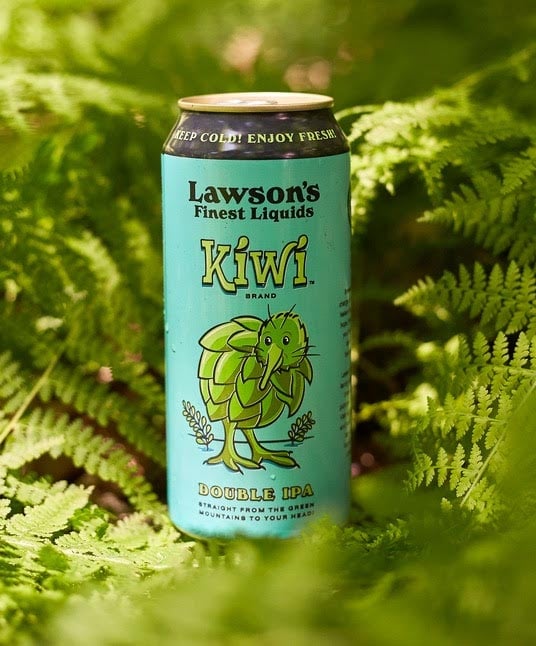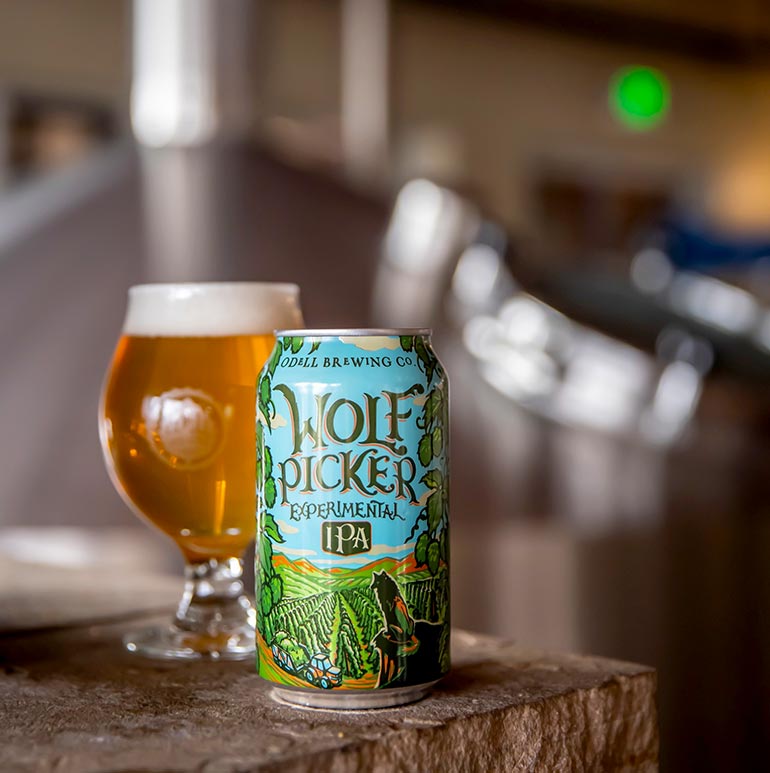Start 14-Day Trial Subscription
*No credit card required

The Complete Truth About the Origins of India Pale Ale (IPA)
Because of its popularity, most craft drinkers know – or think they know – how India Pale Ale began. Trouble is, almost no one knows the true backstory of IPA.
Because of its popularity, most craft drinkers know – or think they know – how IPA began. To quote one version of the popular history of the style: "Back in the late 1700s and early 1800s, England held a large colonial presence in India. British soldiers, sailors and civilians had a huge appetite for beer. Trouble was, the voyage to India was long, and by the time the ship made it there the traditional beers had spoiled. Even when they didn't, the dark porters that were popular at the time weren't quite the ticket in the hot climate of India. George Hodgson of the Bow Brewery in London was the first person to come up with an answer to this problem. He began brewing a lighter style of beer with more bitterness, known as pale ale. Hodgson realized that high alcohol and hop levels would retard spoilage. His process succeeded, and for about 50 years he held a virtual monopoly on the market."
Trouble is, almost none of the above is true. Ale and beer were being successfully exported to India – and farther – from at least the beginning of the 18th century, and while there was some spoilage, the shipments of beer that were being sent out could easily last a year or more in cask. So nobody needed to invent a new style of beer to survive the journey better. Porter continued to be popular in India through the 19th century, and strong dark beers are still drunk in hot climates, from Sri Lanka to the West Indies. Pale ales were around for at least a century before George Hodgson began brewing.
By the 1760’s brewers were being advised that it was “absolutely necessary” to add extra hops to beer if it was being sent to warmer climes, but there is no evidence linking this advice to any specific brewer and certainly no evidence that Hodgson was the person who thought this plan up. Nor was the beer that became IPA particularly strong in alcohol: At around 6.5 percent alcohol by volume, it was, if anything, slightly weaker than average for the time.

IPAs have come a long way from their humble beginnings in 18th-century London, as this tropical, juicy Kiwi Double IPA from Lawson's Finest Liquids entails.
Certainly Hodgson's Bow Brewery, in east London, became the best-known and most popular brewer of pale ales for export to India, though he never had a "virtual monopoly." Other brewers were also shipping beer out east, from London, from Liverpool, from Edinburgh and elsewhere. His advantage had less to do with the excellence of his product and owed more the fact that his brewery was only a short distance from where the East Indiamen, the ships that did the trading with India for the East India Company (the people whose tea led to a well-known riot in Boston), tied up in the Thames. The commanders of the East Indiamen traded on their own behalves, taking out goods from England to sell to the East India Company's "civil" and "military" servants in Bombay, Madras and Calcutta, and among the items they took out was beer. Hodgson, although a comparatively small brewer, was handily placed to supply that beer, and also granted the ships' commanders extended credit, and that's why they traded with him rather than any of the bigger London brewers.
Pale ale, along with porter from England, made by unnamed brewers, was being advertised for sale in India by 1784. Nine years later, Hodgson's pale ale and porter were being advertised in India by name (note, incidentally, that despite what many modern writers will try to tell you, there were no apparent problems about exporting porter to the East). But we don't know whether the Hodgsons were putting extra hops into their pale ale sent to India in the 1790’s, as brewers were being advised to do in the 1760’s – we have no evidence for Hodgson's pale ale recipe at this time at all.
The first guide to a recipe for pale ale shipped to the East does not appear to have been printed until 1821, when the first American edition of Andrew Ure’s Dictionary of Chemistry said: "It is well known that other things being equal, the liquor keeps in proportion to the quantity of hops. Fresh beer may have from a pound to a pound and a half to a barrel of 32 gallons, June beer two pounds and a half, beer for the month of August three pounds and for a second summer three and an half. For India voyages, four pounds."
Whatever Hodgson's recipe was, the Bow brewery's pale ale was certainly the top seller in the East, even after the brewers of Burton upon Trent began exporting to India as well from 1822. In 1829 it was said that “Mr Hodgson’s beer … is by far the best and most sought after in India … In Calcutta Hodgson sold for 50 percent more than Meux, Whitbread, Barclay (three big London porter brewers), or any other brewer.” Ten years later, in 1839, it was described as “Hodgson’s ale, the universal and favourite beverage of our vast Indian territories.”
However, this beer was called "pale ale for India," "Pale Ale prepared for the East and West India Climate" and similar circumlocutions, not the familiar name we know today. The first use of the phrase that eventually became shortened to IPA does not seem to occur until an advertisement in The Liverpool Mercury newspaper on January 30, 1835, for Hodgson's "East India Pale Ale." Even after this, many newspaper advertisements continued to talk about "Pale Ale as prepared for India" rather than "India Pale Ale" for another decade or so.

An eminent Fort Collins, Colorado IPA producer, Odell Brewing Co.'s Wolf Picker Experimental IPA is an example of the myriad directions that American brewers have taken the India Pale Ale style.
Meanwhile, Hodgson's brewery was coming under increasing competition from India Pale Ales brewed in Burton upon Trent, competition that grew dramatically when the railway line between London and Burton opened in 1839, allowing the Staffordshire brewers, such as Bass and Allsopp, to reach the growing London market speedily and easily. The Hodgsons seem to have left the Bow brewery some time between 1845 and 1848, and it went through several changes of ownership until it finally closed in 1927.
At no time, however, did the Hodgsons, or any subsequent owners of the Bow Brewery, ever claim that India Pale Ale was invented in Bow. It was not until 1869, more than 20 years after the Hodgsons had departed, that a writer named William Molyneaux declared that "the origin of India ale is by common consent accredited to a London brewer named Hodgson … The brewery where pale ale was first brewed, according to popular opinion, was the Old Bow Brewery." But as we have seen, popular opinion was wrong. Instead, India Pale Ale seems to have developed out of the idea current at least as far back as the 1760s that it was “absolutely necessary” to add extra hops to beer intended to be drunk in hot climates, with no evidence at all that George Hodgson was the first person to discover this.
Modern Innovations in IPAs
While the origins of IPA are fascinating, there has been a world of changes since that first batch of Bow Brewery's "pale ale for India" made its way to the shores of England and India. For one thing, the American influence in the early craft beer movement (especially from Anchor and Sierra Nevada's usage of Centennial, Chinook and Cascade hops made huge changes to the flavor profile of pale ales and the burgeoning IPA style.
Since then, more IPA beer styles have been born as brewers have experimented with the fermentation process, higher alcohol content and different ingredients in IPA and pale ales. Some of those ingredients include wheat and oats in New England IPAs.
New IPA Styles
Speaking of NEIPAs, there have been a bevy of new IPA styles born in the hundreds of years since those first bottles of IPA sailed the ocean. A few notable ones include:
Hazy IPA (aka NEIPA)
A style that has experienced a massive popularity boom in recent years, this style is known for its turbid, sometimes opaque appearance. Highlighted by huge citrus aromas and a pillowy mouthfeel, the IPAs from the 19th would be stunned to see these hugely hopped creations.
Session IPA
A low-ABV version of a standard IPA, with all of the expected flavor and aroma notes. Simply a standard IPA, but with a lighter taste on the palate.
Imperial IPA (Double IPA)
A high-ABV version of a standard IPA. Depending on what hops and malts are used, flavors and aromas can range from mango, papaya, passion fruit, tangerine, pine, citrus and plenty more.
Black IPA
An unusual IPA variant, this one features a heavier dark malt bill that provides its rich, rounded flavor and dark brown to black coloration. An unusual option for the real hopheads out there.
West Coast IPA
These fell out of favor as hazy IPAs took the beer world by storm, but now they are coming back with a vengeance. Known for snappy bitterness and notable pine aromas and flavors, West Coast IPAs represent how IPAs were when the craft beer revolution began.
A Note on Dry-Hopping
Dry hopping is a process in which brewers add hops late in the brewing process in fermentation tanks to ramp up specific aroma or flavor traits without adding more bitterness to a specific brew.




Comments